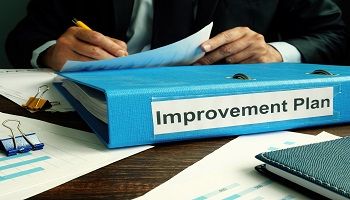Looking Back and Looking Forward to Improve
There are many New Year celebrations – Tet, Rosh Ha Shona, and more. Why not make every day the beginning of a new year?
But now we are here celebrating the Western solar new year. We are reminded to enjoy the moment, reflect on the past and visualize a healthier, happier, more productive, and peaceful future.
Time to Reflect and Plan
Now is a traditional time for looking back, remembering the past, and looking forward, resolving to make a “better” future. In project management this is quality improvement through assessment, control, improvement planning, and follow through.
As individuals, we make resolutions to improve by giving up bad habits and cultivating positive behavior. We resolve to stop overeating or drinking and to exercise more, or to take that course that will lead to a new career, or to be kinder and more understanding and patient.
But many resolutions last a short time because we don’t follow through.
On a team or organizational level, do you make resolutions and follow through with them? Do you reflect and plan as a normal ongoing process, or is it a once-a-year event?
Quality Management
Among project management’s principles is assuring quality by critically assessing performance and planning to improve. Dr Deming’s PDCA cycle: Plan, Do, Check, and Act is one way of looking at the improvement process.
Reflect and resolve once a year and you are certain to miss a lot of opportunities to improve performance and wellness. Build PDCA into your normal way of doing whatever you do and you will reap the benefits of an ever-improvising process.
Learn
This article reinforces the message of my October article, “Learn from the Past to Perfect Performance, “Learn from experience. Set aside time for reflection, learning, and making the intention to perfect the way you live and work.”
Improvement is cyclical. It is ongoing. It continues as long as the target process or product lasts. The target process may be your own project management process or a new process resulting from a project. Here the focus is on the project management process.
Advertisement
[widget id=”custom_html-68″]
PDCA
The PDCA cycle is an improvement model that uses a scientific method:
- Plan – propose a change,
- Do – implement it,
- Check – measure to see if the intended goals are achieved,
- Act – decide whether to adjust by taking appropriate action in another cycle, or to standardize and stabilize the new process.
You decide to standardize and stabilize changes to your process when you have achieved planned benefits. Then you start a new cycle based on your new standard.
The Standard
You may or may not have a standard to start with.
When a new process is being designed and implemented the standard is a set of expectations. For example, you expect to complete 90% percent of projects within 10% of the original planned time and budget.
If you have done performance measurement you may know that your current standard is 40% of your projects meeting that expectation. If you do not have an objective sense of your past performance, you are at a disadvantage, but all is not lost. Chances are there is a subjective sense that you are not satisfying stakeholder expectations. Too many projects are delivered late and overbudget.
Part of planning is to set an expectation, a standard or benchmark to use as a target. You determine your goals and set the standard for measuring or checking the effects of your efforts. Research to determine if your goals are realistic. Make sure you are setting a realistic expectation about how long it will take to achieve your goals. Assess risks.
Plan to Achieve Goals
With realistic goals in mind, you plan the way you will meet them. To do that well, you have a decision to make. Will you refine your existing process or start from a blank slate?
How unstable and undefined is the current process? Is documenting it worth the effort or is it more effective to find a good model and adapt it to your current conditions.
In the realm of project management, don’t try to invent a brand-new process. You would be reinventing the wheel. Instead, take the time and effort to find a suitable model or models for the kind of projects you perform. If you have multiple project types you may need multiple defined processes, some agile, some more structured.
Cause Analysis
Look back to see why you are not meeting stakeholder expectations. Sep back and candidly assess causes. Are schedules and budgets dictated from above or are they the result of actual planning based on expected resources and conditions? Are projects initiated without regard of their impact on ongoing operations and other projects? Are estimators and/or performers in need of training or better tools or both?
Looking back at causes and on the state of the current process often causes conflict and resistance. Performers and project managers may be attached to the way they have been operating.
For example, they may be happy not to have to follow a defined process. They may not have knowledge of or may be in denial regarding the perceptions of stakeholders. They may be threatened by criticism and resistant to change.
Tread carefully to manage change in a way that engages and motivates the people who will have to go through the transition and live with the new process.
Do
This is where follow through comes in. Educate, train, and implement change. Treat it as you would with any project, with care to support the people involved.
Check and Act
Realize that the new or changed process is not complete until you have checked to see if goals have been met. This is quality control and testing.
If you have done it well, the planning has left a standard, a benchmark, to measure against to determine if your efforts have achieved what you intended. Check often during the life of the improvement process.
Based on your findings decide and act. You may decide to continue, with or without changes to your goals, methods, or both. Or you may decide to stop, standardize, and stabilize the process.
Standardizing and stabilizing the process does not mean that your improvement work is done. You have just set a new standard against which to measure performance and go into a new PDCA cycle.
If you have done the improvement job well, future changes will be tweaks rather than major changes, though as new technologies like AI are introduced, more radical changes may be needed.
It is always a new year. Look back at what you have done, how successful it has been, and what you can do to make it better. Look forward to plan check and act.
Related articles:




